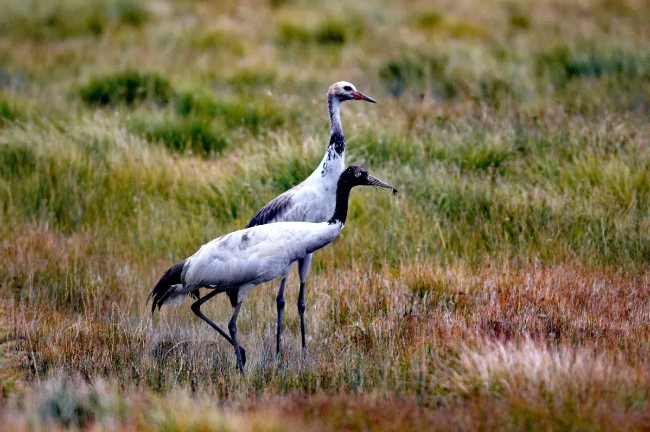Black-necked crane population reaches record high in Gansu's Yanchiwan
In a recent survey conducted by the Yanchiwan Protection Station of the Gansu Yanchiwan National Nature Reserve Management Center, the population of black-necked cranes in the Yanchiwan International Important Wetland has reached an all-time high.

Gansu's Yanchiwan Wetland sees encouraging rise in black-necked crane numbers. [Photo provided to gogansu.com]
Employing line transect methods and utilizing such tools as binoculars and drones, researchers meticulously counted and categorized the cranes. The survey recorded a total of 281 black-necked cranes, comprising 104 adults, 44 juveniles, and 133 sub-adults. Notably, 15 families were observed, each with two juvenile cranes. This year's count represents an increase of 43 individuals compared to last year, marking the highest number since monitoring began in 2014.
The results paint a promising picture of the wetland's ecosystem health. With juveniles constituting 15.66 percent of the population, the data suggests a robust breeding success rate for these majestic birds.
Located in Yanchiwan township, Subei Mongolian autonomous county, Jiuquan, Gansu province, the Yanchiwan International Important Wetland sits at an average altitude of over 3,000 meters. Since its inclusion on the list of International Important Wetlands in 2018, local authorities and the Gansu Yanchiwan National Nature Reserve Management Center have implemented effective conservation measures. These efforts have created an ideal habitat for various rare migratory birds, leading to a steady increase in both species diversity and population numbers.
Looking ahead, the Gansu Yanchiwan National Nature Reserve Management Center plans to use the findings from this survey to develop targeted conservation strategies. These measures aim to ensure the long-term stability and continued growth of the black-necked crane population in this critical wetland ecosystem.
-
As AI encounters Dunhuang's art, the ancient caisson ceiling bridges centuries to the present.
View all stories

 Gansu thrives from green development
Gansu thrives from green development  >
>